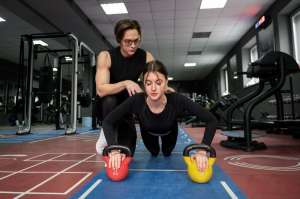Your feet are truly amazing creations. They carry you through life, providing support for every step. Yet, many overlook their foot health until problems arise. Daily activities stress your feet, from walking and standing to exercising. This prolonged pressure can lead to various foot issues if you neglect proper care.
These issues often affect more than just your feet; they can impact your entire body. Using the right footwear for each activity influences how your feet feel and function. Surprisingly, something as simple as your shoe choice, like slipping into recovery footwear post-workout, can either support or sabotage your body's alignment.
This blog post explores how your feet influence your health and what you can do to stay pain-free.
How Your Feet Influence Your Whole Body
Your body functions as an interconnected system where each part impacts the others. This connection is called the kinetic chain. Your feet form the foundation of this chain, supporting your entire body structure. This complex system acts as a shock absorber, adapting to surfaces and distributing weight.
According to the New Jersey Podiatric Physicians & Surgeons Group, when the feet don't work properly, their effects move upward. For example, when feet misalign (due to flat arches or overpronation), it strains the ankles, knees, hips, and back. Over time, this strain travels upward, causing slumping, uneven weight shifting, and tension in the spine.
This bad posture worsens foot imbalances by exerting abnormal pressure on the arches and heels of the feet. It can trigger issues like plantar fasciitis, heel spurs, and bunions. It becomes a vicious cycle where the more foot pain you develop, the tougher it becomes to sustain a healthy posture. Left untreated, these foot problems can result in persistent discomfort, reduced mobility, and a lower standard of living.
Choosing the Right Footwear for Your Lifestyle
Most people wear shoes that don't fit properly, leading to numerous foot issues. To check if your shoes fit, make sure you have about a thumb's width of space between your longest toe and the shoe's end.
Different activities require different types of support:
- Walking shoes should have flexible soles and good arch support
- Running shoes need proper cushioning and stability features
- Work shoes should provide comfort for long periods of standing
The right shoe should match your foot type and your activity level. Measure your feet consistently, as foot proportions can vary during the day and change over time. Similarly, once you buy the ideal shoes, replace them regularly. Shoes lose cushioning and arch support after use.
Worn treads or compressed midsoles fail to absorb impact, increasing joint stress. Ankle injuries occur in shoes older than six months. Rotate between pairs to extend their lifespan and monitor sole wear patterns.
Preventative Foot Care Strategies
Daily foot care makes a big difference in your overall health. Simple habits like washing and drying your feet can prevent infections and skin problems. Worn-out shoes harm more than just your feet. Shoes with uneven wear patterns can throw off your body alignment, causing ankle, knee, and hip issues. Upgrade athletic shoes every 300–500 miles of usage.
The debate about wearing shoes indoors has health implications, too. While walking barefoot strengthens foot muscles, improving balance and arch stability, experts warn that hard floors lack shock absorption. TIME reveals that the only part that can absorb this impact is your feet. However, over weeks or months, it can cause inflammation, leading to severe complications.
Opt for custom, medical-grade orthotics or anti-fatigue floor mats. Both items can soothe foot soreness, disperse force, and improve stability. To further strengthen your feet, add foot exercises to your routine. Simple movements like toe curls and ankle rotations can prevent common foot disorders by strengthening supporting muscles.
Additionally, wear recovery shoes after intense physical activities. These shoes have foam midsoles that reduce muscle fatigue and improve circulation. Moreover, according to VELOUS Footwear, the shoes' unique design promotes natural foot movement and prevents repetitive injuries like shin splints and plantar fasciitis.
While many find recovery shoes helpful, experts have different views on the best approach. For example, Dr. Emily Splichal, a functional podiatrist and human movement expert, suggests using minimalist shoes instead. Talking to TODAY.com, she reveals she isn't fond of recovery shoes' arch support and cushioning.
Instead, Splichal believes in active recovery or sensory stimulation for pain relief. You can accomplish it by using minimalist shoes or massaging the footbeds. Exploring these different approaches shows just how many ways you can actively care for your feet.
Commonly Asked Questions
Q1. How often should I replace my everyday shoes, even if they look fine?
Even shoes that look good on the outside might have worn-down support structures. Replace everyday shoes every 8–12 months, depending on use. Look for subtle signs like uneven wear patterns or diminished comfort, not just visible damage. Your body notices failing support before your eyes do.
Q2. Can orthotics help with problems beyond my feet, like headaches?
Yes, surprisingly, chronic foot pain can contribute to tension headaches. When your feet hurt, it can alter your gait and posture, creating muscle tension that travels through your body to your head. When orthotics correct your foot alignment, they can relieve tension throughout your body's kinetic chain.
Q3. Should I walk barefoot or with shoes at home if I have foot pain?
It depends on your specific condition. Some foot issues benefit from controlled barefoot time to strengthen muscles, while others require consistent support. Consider alternating between supportive house slippers and short barefoot periods on natural surfaces to find your ideal balance.
By giving your feet the attention they deserve, you build a stronger foundation for your entire body. Understand the foot-body connection to make better choices. Don't dismiss the power of simple habits and the right footwear. Check your feet daily, especially if you have diabetes or circulation issues.
Stretch your feet every day to promote mobility and strength. Remember that healthy feet contribute to a healthy body. By securing this crucial foundation, you support your overall well-being from the ground up.






